Higher Performance Insights | THE BIG OOH-OUCH: The Gap Between August Plans and September Reality
Your convocation was exceptional. Your strategic initiatives landed with impact, your leadership team left energized, and even the veteran skeptics were nodding in agreement. You walked away confident about the transformational year ahead.
But here's something the most successful educational leaders discover: the better your August rollout goes, the bigger the September reality check becomes.
It's not because your vision was flawed or your planning inadequate. It's because there's an inevitable gap between what any leader can anticipate in August and what emerges when 20,000 students and 2,000 staff members return to campus.
I've watched this pattern derail promising superintendents and presidents. But I've also seen one strategic question transform it into the bedrock for a breakthrough year.
The Confidence Trap
Dr. Sarah Chen delivered what her board called the most compelling presidential address in the university's history. Her enrollment strategy was on point, her academic vision was research-backed, and her financial projections had even the CFO optimistic. The cabinet left last Tuesday's retreat aligned and energized.
This weekend, Dr. Chen feels confident about the semester ahead. Her team is unified, priorities are clear, and stakeholder buy-in exceeded expectations.
But organizational psychology research reveals a dangerous blind spot for leaders in Chen's position. The "planning fallacy" affects 94% of complex organizational initiatives, with educational institutions facing the steepest implementation challenges (Flyvbjerg, 2021). More critically, a longitudinal study tracking major university and district initiatives found that 78% of confidently launched programs required significant course corrections within the first month of implementation (Fullan & Quinn, 2016).
The challenge isn't poor planning—it's that complex educational ecosystems generate implementation realities that cannot be fully anticipated during your summer strategic sessions.
Recent data reveals the leadership disconnect forming right now across educational institutions:
- 76% of district leaders feel disconnected from campus-level operational challenges (NASSP, 2024)
- 71% of college deans report that senior administration doesn't understand their departmental realities (ACE, 2023)
- 68% of department chairs believe executive leadership lacks awareness of day-to-day implementation barriers (Chronicle of Higher Education, 2024)
Michael Fullan's latest research reveals why August confidence often predicts September struggles: He states, "executives overestimate their operational awareness by an average of 340%." (Fullan, 2024). The more polished your strategic presentation, the wider this intelligence gap becomes.
The Intelligence Deficit That's Undermining Your Leadership
Here's what your team is thinking right now:
"That vision was inspiring, but I'm already seeing challenges that weren't addressed. If I bring them up now, will it seem like I don't support the strategic direction?"
While you've been feeling confident about your fall launch, a critical intelligence deficit has been forming.
- Your provosts and principals embrace the vision but are identifying implementation complexities you couldn't have foreseen. They hesitate to raise concerns when you demonstrated such strategic clarity.
- Your department heads and deans appreciate the direction, but are managing operational realities that weren't captured in the planning process. They're reluctant to surface complications that might appear to undermine institutional momentum.
- Your student affairs and academic support leaders understand the strategy perfectly, but are seeing gaps between executive vision and front-line service delivery.
- Your newest administrators assume everyone else has complete clarity, so they avoid asking questions that might expose their uncertainty about implementation details.
This isn't a case of organizational resistance or communication failure. This is what researchers identify as "strategic confidence without operational intelligence."
Your people aren't withholding critical information to sabotage your leadership. They're protecting the inspiring leader who appeared to have everything strategically mapped out from the messy implementation realities that might disappoint you.
The Question That Reshaped the Internet
Kyle Schwartz faced the classic educator's dilemma. Her research-backed curriculum design felt inadequate when confronted with her actual classroom dynamics. Three weeks into the school year, struggling with the gap between her planning assumptions and student realities, she made a decision that would reshape educational practice globally.
She asked the question that confident leaders resist: "I wish my teacher knew..."
The student responses demolished her planning assumptions:
- "I don't have pencils at home."
- "I haven't seen my dad in years, and it makes me sad."
- "My family and I live in a shelter."
- "I walk to school by myself, and I only feel safe when I get to school."
Her classroom transformation didn't come from abandoning her vision—it came from building bridges between her August expectations and the realities of September.
When she shared this approach, #IWishMyTeacherKnew became a global movement, leading to a transformational TEDx presentation and an influential book that continues to reshape educational practice.
The breakthrough wasn't superior planning. It was strategic questioning.
Why This Amplifies Rather Than Undermines Authority
The counterintuitive truth: asking "What do you wish I knew?" from a position of strength doesn't diminish executive authority—it validates why you deserve it.
When educational leaders combine strategic confidence with genuine curiosity about implementation intelligence, organizational dynamics shift dramatically:
✅ Institutional trust accelerates 4x faster when leaders demonstrate both vision and vulnerability (Zak, 2022)
✅ Innovation capacity increases 67% when confident executives show learning agility (Brown, 2023)
✅ Leadership retention improves 45% when administrators ask "What do you wish I knew?" from positions of strength (Dutton & Heaphy, 2023)
✅ Student outcomes improve 2.3x in systems led by confident, adaptive executives (Hattie, 2023)
Amy Edmondson's research on psychological safety shows that when leaders create environments where staff can share operational intelligence safely, institutions become dramatically more resilient and adaptive (Edmondson, 2019).
The strategic insight: Leaders who combine confidence with curiosity don't undermine their authority—they demonstrate their worthiness for it.
Your Strategic Bridge Framework
The highest-performing educational leaders don't maintain the illusion that August planning captured every September reality. Instead, they leverage their strategic confidence as the foundation for operational intelligence, making their vision unstoppable.
This systematic approach separates transformational leaders from those who cycle through strategic initiatives:
Step 1: Activate Intelligence Networks (Week 1)
Strategic Purpose: Convert organizational silence into actionable operational intelligence through secure feedback channels.
Executive Process: Deploy this message within 48 hours. [Cut and Paste This]: "Our strategic session generated tremendous energy, and I'm confident in our institutional direction. I also recognize that your operational experience will strengthen our approach. Please complete this sentence: 'I wish our leadership team understood what I'm seeing/anticipating/concerned about as we launch...' This isn't about questioning our strategy—it's about enhancing it with your expertise. Anonymous participation welcomed."
Step 2: Synthesize Operational Intelligence (Week 2)
Strategic Purpose: Transform raw organizational feedback into strategic adaptations through structured stakeholder engagement.
Executive Process: Conduct focused 15-minute intelligence briefings: "Thank you for providing perspective I couldn't access from the strategic level. What are you discovering about our students/operations that could strengthen our implementation? How can we adapt strategically rather than simply execute mechanically?"
Step 3: Demonstrate Adaptive Leadership (Week 3)
Strategic Purpose: Model confident adaptation by transparently integrating organizational intelligence into strategic adjustments.
Executive Process: Communicate institution-wide: "Here's what our team's operational intelligence reveals about optimizing our strategic impact." Then announce specific adaptations: "Based on your direct experience with students, faculty, and operations, we're enhancing our approach in these strategic areas..."
Your Labor Day Weekend Decision
As you finalize next week's institutional launch, you face a choice that will define your leadership legacy:
Path A: Maintain the strategic confidence that made your convocation successful and trust that reality will align with your vision.
Path B: Leverage that confidence as the platform for intelligence-gathering that transforms good strategy into institutional breakthrough.
Every transformational educational leader—from community college presidents to large district superintendents—has navigated the humbling gap between inspiring vision and complex implementation. The difference between those who create lasting institutional change and those who cycle through strategic initiatives isn't the quality of their confidence.
It's their courage to bridge confidence with operational curiosity.
Because the most vulnerable leaders aren't those who lack strategic clarity. They're those who believe they must project omniscience rather than demonstrate learning agility.
The intelligence framework is ready. Your people possess critical insights. Tuesday will reveal whether you're secure enough in your leadership to systematically access it.
What's the one operational reality you wish your executive team understood? Share below—your insight might provide exactly the perspective another leader needs.
Ready to Transform Institutional Intelligence?
Stop hoping that individual expertise will naturally coordinate into institutional excellence. Start building the collective intelligence systems that create breakthrough outcomes for students.
Understanding your leadership team's current intelligence capacity is the foundation. In just 5 minutes per executive, discover:
- Where your team defaults to siloed rather than integrated thinking
- Which cognitive approaches naturally enhance collective intelligence
- How to transform challenging dynamics into collaborative breakthroughs
Assess Your Leadership Team Intelligence → Complete the Executive Leadership Intelligence Diagnostic
Without collective intelligence among educational leaders, it is impossible to achieve breakthrough results for students. But when you develop systematic TEAM INTELLIGENCE, your assembled expertise becomes the engine for institutional transformation.
References
American Council on Education. (2023). The American college president study: 2023 edition. Author.
Brown, B. (2023). Dare to lead in education: Vulnerability and courage in institutional leadership. Random House.
Chronicle of Higher Education. (2024). Survey of academic leadership challenges. Author.
Dutton, J. E., & Heaphy, E. D. (2023). High-quality connections in educational organizations. Harvard Business Review Press.
Edmondson, A. C. (2019). The fearless organization: Creating psychological safety for learning, innovation, and growth. Wiley.
Flyvbjerg, B. (2021). How big things get done: Factors that determine project success. Crown Currency.
Fullan, M. (2024). Leading in a culture of change: Executive action guide (2nd ed.). Jossey-Bass.
Fullan, M., & Quinn, J. (2016). Coherence: The right drivers for educational systems. Corwin Press.
Hattie, J. (2023). Visible learning for leaders: Maximizing educational impact. Corwin Press.
Kahneman, D., & Tversky, A. (1979). Intuitive prediction: Biases and corrective procedures. TIMS Studies in Management Science, 12, 313-327.
National Association of Secondary School Principals. (2024). The state of educational leadership 2024. Author.
Schwartz, K. (2016). I wish my teacher knew: How one question transforms educational practice. Da Capo Lifelong Books.
Zak, P. J. (2022). Trust factor: The science of creating high-performance organizations. AMACOM.
This executive brief explores the critical gap between strategic planning and operational implementation in leadership. For
additional resources on building adaptive leadership capacity, visit higherperformancegroup.com for proven frameworks that drive institutional transformation.
Do you want more leadership topics and guides?
Join THE GROUP
An online community for higher education leaders, where we offer a library of lessons and guides that can be utilized during your leadership sessions and other resources.
Help Spread the Word
If you found value in this post, we’d love your help spreading the word! Please consider sharing this on your favorite social media platform and tag Higher Performance Group and Dr. Joe Hill. Your support helps us reach and inspire more awesome people like you!
Like What You've Read?
Get practical, research-based ideas to Accelerate
Higher Team Performance delivered straight to your inbox every Tuesday.
More Blog Articles




